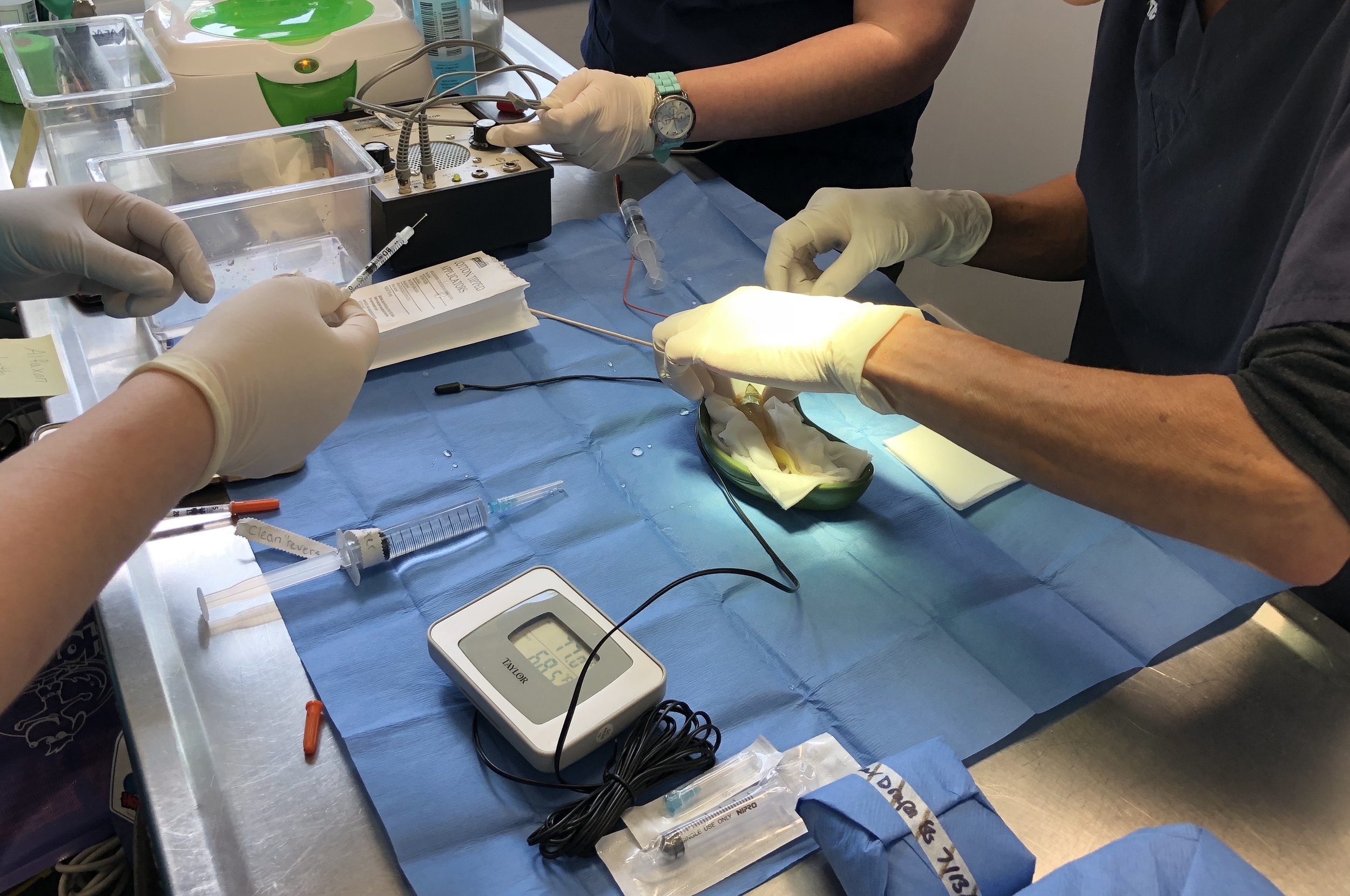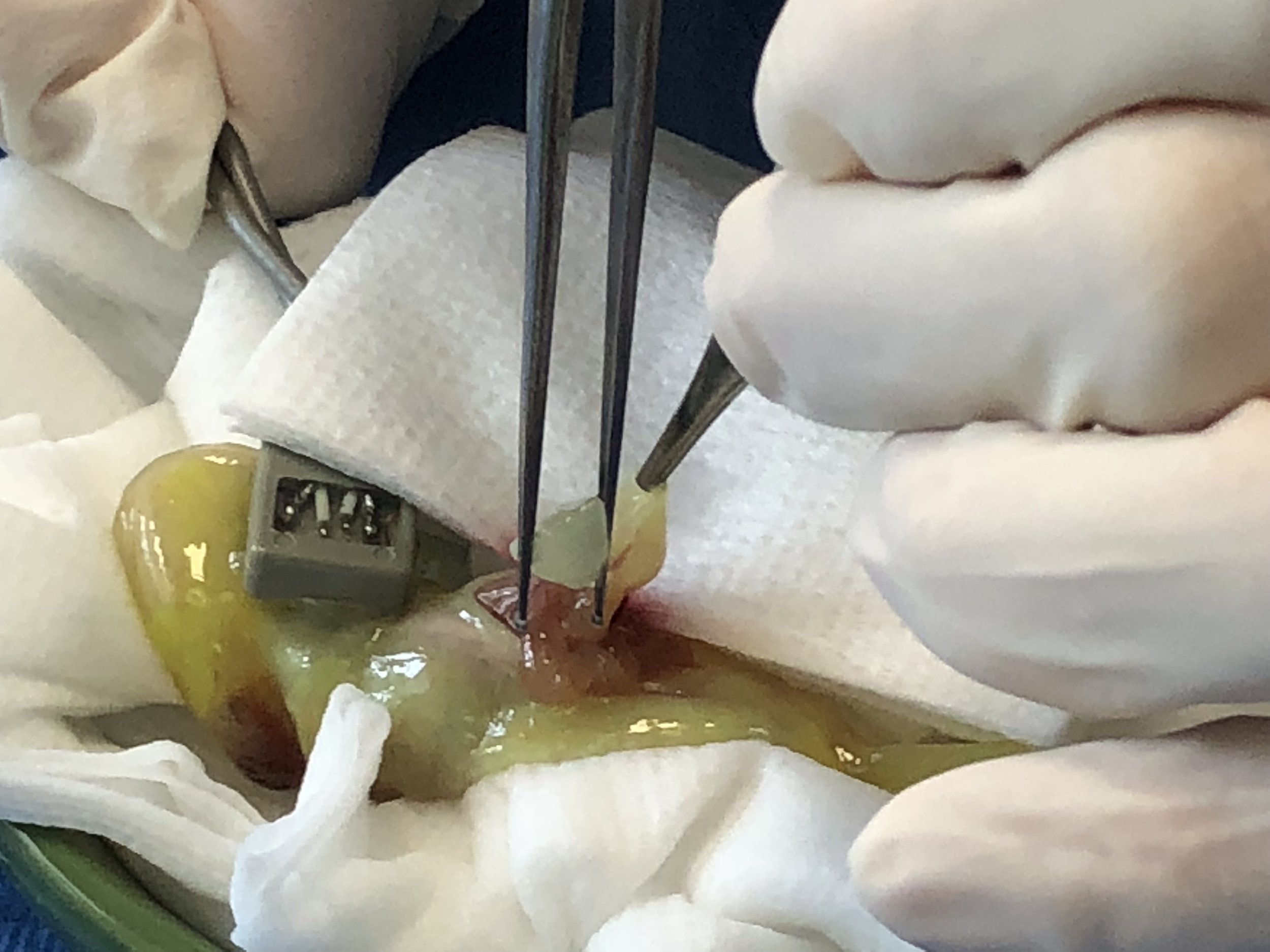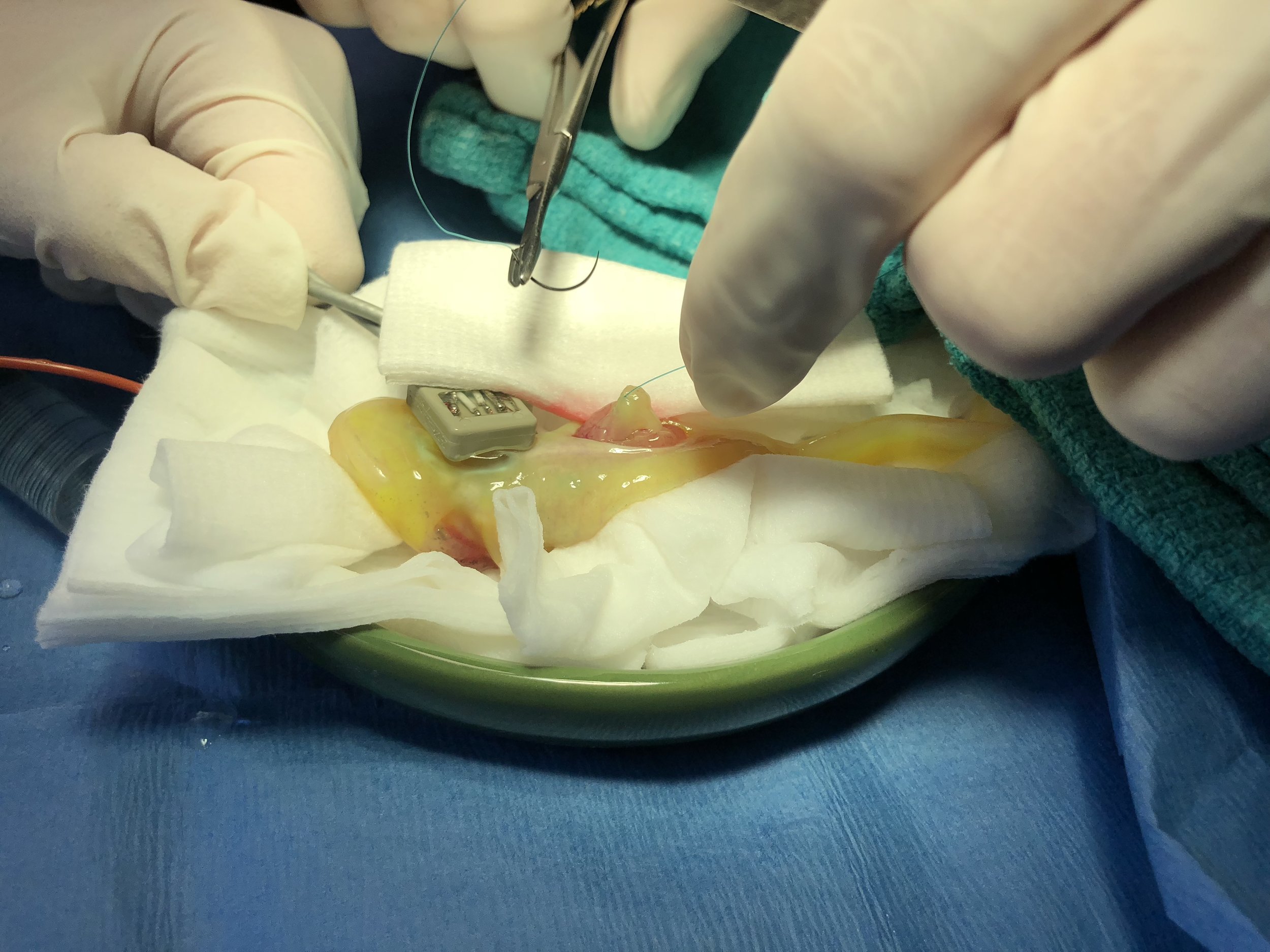This month we saw a cute little patient, an axolotl (Mexican salamander) named Axolotl! To see pictures of other axolotls and learn more about them, see this Wikipedia entry: https://en.wikipedia.org/wiki/Axolot
Unlike other amphibians, the axolotl starts out like a tadpole, and never trade their gills for lungs; instead they live their entire lives in the water.
Axolotls have a bad habit of eating small rocks and other material in their enclosure. In fact, this is the number one health problem of axolotls in general (in both pet and laboratory settings), as they have very few illnesses if they are fed and cared for correctly. For this reason, it’s recommended to house them in a plain aquarium, or with objects too big to get into their mouths.
This axolotl decided to eat a fairly large number of rocks of all sizes. His owner quickly removed the gravel, and he proceeding to “eliminate” most of them…except for 6 really large rocks far too big to come out that way. They were also too big and irregular to simply pull out of his stomach with an endoscope.
So how does one anesthetize an aquatic axolotl?
Some interesting current publications show that the best way to keep them asleep for surgery is to bathe their skin and gills with an anesthetic water bath.
Hopefully the sutures will stay secure, and he will make a full recovery-and NO more rocks!
The axolotl was sent home the next day, and we hear he is already eating small meals.








